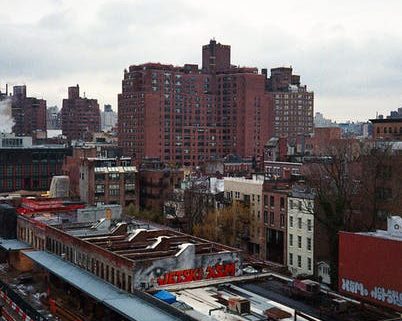A new roof is a major investment, and a crucial one, at that. So what happens if your current roof is failing?
Many business owners may feel the need to count their pennies to see if they can fit a new roof in their budget. But, not all roofing issues call for a roof replacement…especially if your roof is new.
So, how long does a roof last? And, what are some signs that you need a new roof? Continue reading to help diagnose your roofing problems.
How Long Does a Roof Last?
We’re going to cut right to the chase — how long should you expect that roof to last? The answer: 20 years, at the least.
Most commercial roofs are made of either EPDM, PVC, or TPO. Popular materials such as TPO and EPDM are affordable and can last about 20 years. PVC is a more expensive option, but it can last over 20 years.
However, these numbers are just estimates. Different factors can cut a roof’s lifespan, with the most common factors being weather and climate conditions, specifically big storms.
How to Know Your Roof’s Age
Unsure how old your roof is? There are easy ways to find this information.
The best way to check is by reviewing your building improvement records. Most will specify when the roof was installed along with other maintenance duties, such as new shingles.
If you’re unable to find those records, call a roofing professional so they can determine the roof’s age.
Signs You Need a New Roof
While looking at the age of your roof is a good indicator of whether or not you need a new roof, it’s more helpful to take a look at the following warning signs. If you notice these issues, don’t hesitate. Call a roofing professional!
Roof Valleys
Roof valleys are the channels that run on the “fold” of a roof. This area is important because rain and snow travel from the valleys into your gutters.
Looking at its condition can let you know if you need a new roof or not. Take a look at the materials in this area. Are some materials missing or falling off?
If so, you put yourself at risk of your roof leaking, which can cause further damage.
Look At Your Ceiling
If you can’t spot any damage on the outside but you can spot stains or streaks or watermarks, your roof is leaking. The worst part, the leak may not necessarily be right above the damaged area on your ceiling (water can leak in from weak or damaged areas on the roof from several feet away).
Look for Moss
Moss is a plant that naturally grows in many places. But on a roof, it spells trouble.
Moss is attracted to damp areas. If moss is growing on your roof, it’s often a telltale sign that your roof’s getting too damp. The dampness comes from trapped moisture, which can damage your roof.
Can’t find any moss? What about mold or fungi?
If you spot any of these plants, call commercial roofing professional. The best case scenario is your roof is fine and they can remove the plants. But, worst case, the excessive moisture can expose any number of underlying problems.
Increased Energy Bills
Having a reflective coating on your roof greatly improves the energy efficiency of your building.
When it’s hot and sunny out, a reflective coating is going to help keep the surface heat of your building down, causing your air conditioner to work less and your building to become more energy efficient.
When you lose reflectivity in your roof’s surface, you lose energy as a result. This is definitely going to lead to higher energy bills. In addition, losing reflectivity is a sign of a deteriorating roof. It’s best to confirm this with a professional commercial roofing contractor.
Sagging
A sagging flat roof can be the cause of many issues and it could lead to really bad problems, like your roof collapsing.
It’s best to confirm the exact issue with a roofing contractor.
Bubbles
Flat roofs can also develop bubbles. These form underneath the top layer of your roof.
Bubbles are usually a sign that moisture is developing underneath your roof. As more bubbles develop, your roof is holding on to more moisture and needs to get repaired.
Issues with Flashing
Flashing is the material around the roof’s edge where it meets the wall. It’s installed around equipment to prevent water from entering the seams and joints.
When there are gaps in the flashing, there’s a serious issue with your roof. There’s likely a premature issue starting to rise due to weather conditions like water intrusion and wind damage.
TPO Roof Coating Cracks
If you have a TPO roof, the easiest way to discover damage is by looking for cracks. These cracks signify that your roof is past its prime. If left untreated, additional damage can occur.
Rips in EPDM Membrane
If you have an EPDM roof, rips on the surface are an obvious sign of damage. (These rips form in the rubber outer layer.) Ripping means your roof won’t be able to provide the same protection it once did, leaving you at risk for other issues, such as leaking.
Do You Need a Roofing Professional in Akron, Ohio?
So, how long does a roof last? Ideally, you can keep yours around for 20 years.
But, don’t be surprised if you need a new roof (or major repairs), especially after a storm (which can damage a roof, decreasing its lifespan). Look out for signs of possible damage and contact a commercial roofing professional if you notice issues.
The key to a healthy roof is regular maintenance. If you’re in Akron, Ohio or the surrounding area, our company has over 50 years of roofing experience and we’re devoted to quality services. Discover what TEMA can do for you! Take a look at our maintenance services.





